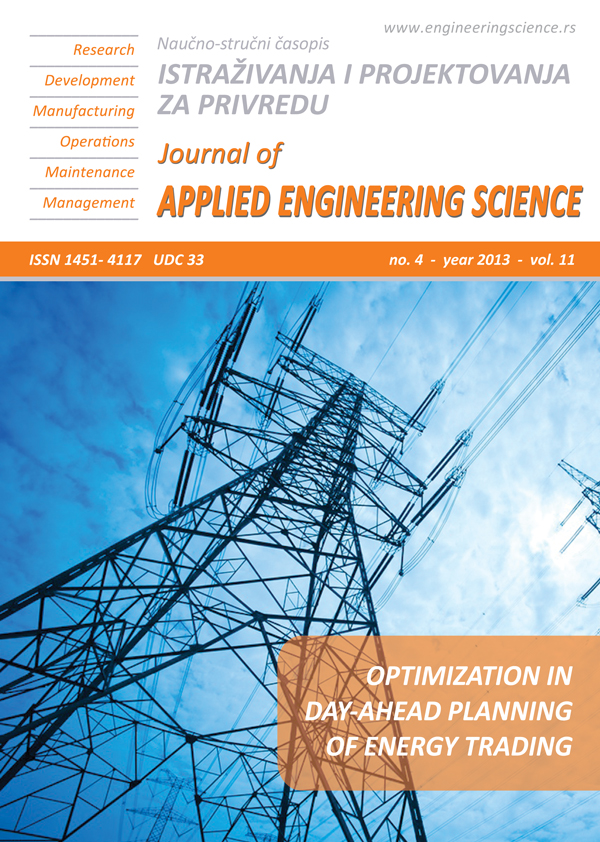THE ADVANTAGES OF INTELIGENT APPROACH TO MACHINING PRESENTED THROUGH PROCESSING TECHNOLOGY DESIGN DEVELOPED BY I-MACHINING
Abstract
The modern day efficient machining requires a new approach to designing machining technology, which enables the complete engagement of all technological machining parameters, like cutting speed and cutting feed depending on the workpiece material, characteristics of the machine and tools and volume of the material removed from the machined zone. Controlling physical quantities, which appear in the process of cutting, enables us to achieve faster machining processes when compared to current high speed machining technologies (HSM) and at the same it increases productivity. This approach to machining requires the CAM software intelligence to make decisions in real time and optimize tool path, in order to keeping the constant cutting tool force during whole machining process. This type of approach was used while designing machining for “heat exchanger” with the help of imachining technology within SolidCAM software for programing of CNC machines. Where by reduced the machining time for 36% in accordance to conventional machining and made a total savings of 45.33%.
References
David Pancoast (2013), SolidWorks, Concord, Massachusetts, USA, 2009.
Glišović, J., Demić, M., Miloradović, D. (2011): „Review of virtual reality applications for reducing time and cost of vehicle development cycle”, Journal of Applied Engineering Science (Istraživanjaiprojektovanja za privredu), No. 3, Vol. 9, pp. 361-372
Ogrizovic M. (2008): Upravljanje CNC masinamaiz ProENGINEER-a Wildfire, Kompjuterbiblioteka, Beograd
Ogrizovic M. (2012): Programiranje CNC masina, Kompjuterbiblioteka, Beograd
SolidCAM Technical Support, 2013: SolidCAM_2013_FAQ_iMachining,SolidCAM Company
Stanisavljev, S., Ćoćkalo, D., Đorđević, D., Minovski, R. (2013): „The production cycle time in serial production: reduction of the duration in metal processing industry case“, Journal of Applied Engineering Science (Istraživanjaiprojektovanjazaprivredu), No. 3, Vol. 11, pp. 116-122

